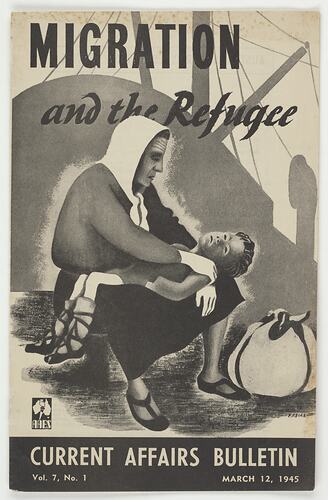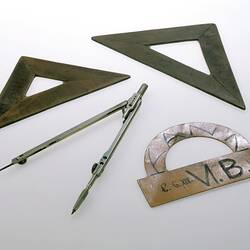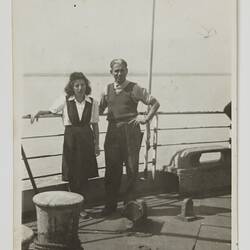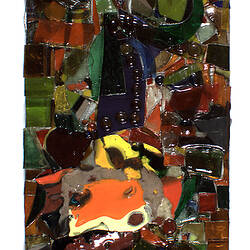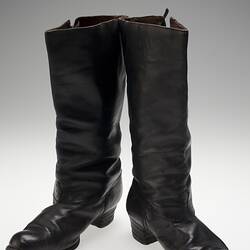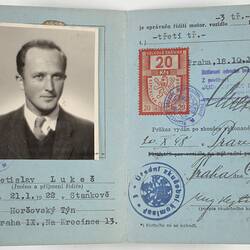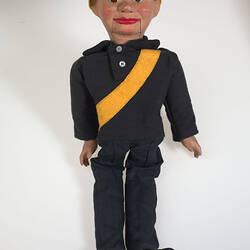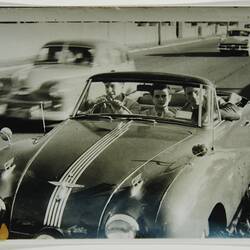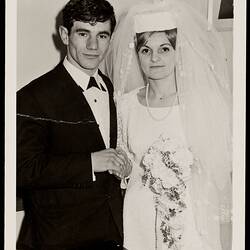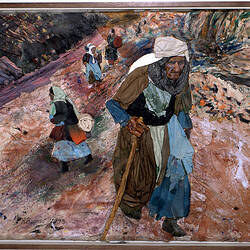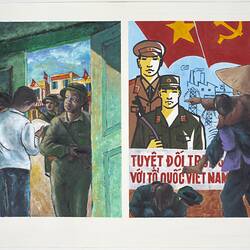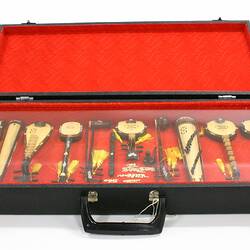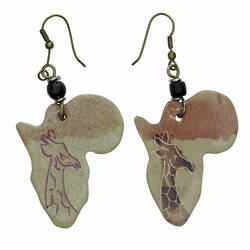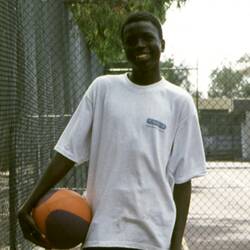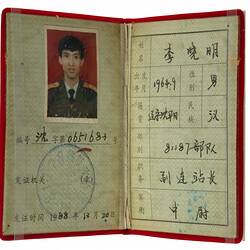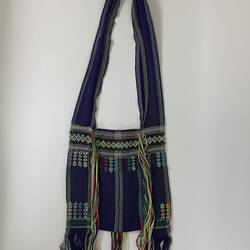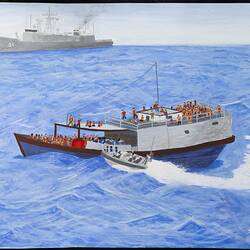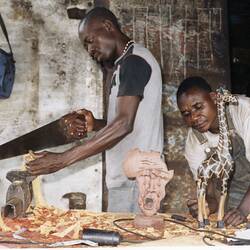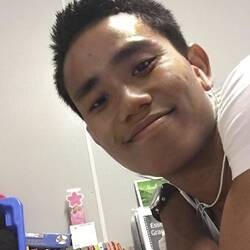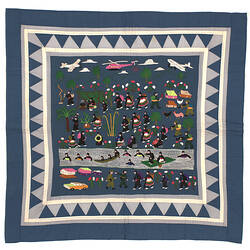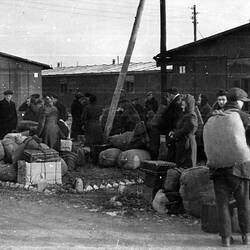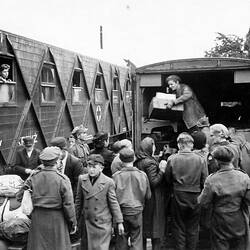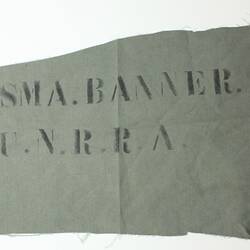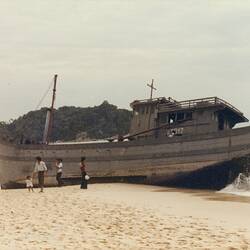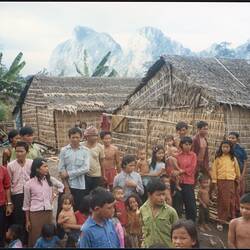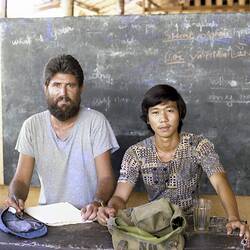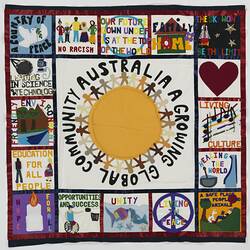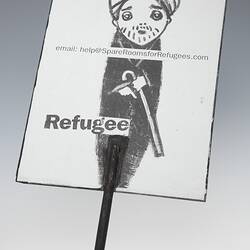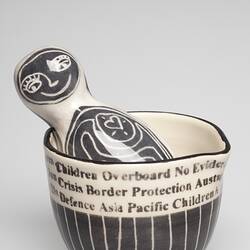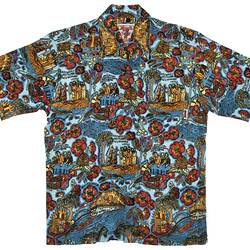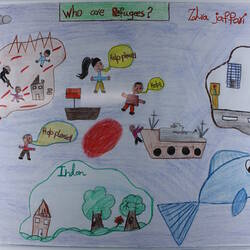Summary
The Museum's Migration and Cultural Diversity collection includes around ten thousand objects, documents, photographs and oral histories relating to refugee stories, government policies and processes and public debate.
Overview:
Museum Victoria's Migration and Cultural Diversity collection includes around ten thousand objects, documents, photographs and oral histories relating to refugees. These includes items that represent the personal stories of refugees, asylum seekers and detainees. The collection also incorporates material relating to government refugee policy, immigration department workers, community protest and broad social issues.
Collecting Arrival & Settlement Stories:
Collecting material relating to the stories of refugees and asylum seekers is always challenging. The very nature of their experience, which invariably involves trauma, dislocation, movement and often poverty, means that they either own, or can carry, little. And if they did bring a few items, they often don't survive. Seeking refuge is not a new or recent motivation for migrating to Australia - after World War II 170,000 displaced people came to Australia, and around 80,000 people left Vietnam, Cambodia and Laos for Australia from 1975 after the Vietnam War. These are just two examples of large-scale refugee migrations to Australia.
Museums Victoria has relied on former refugees to offer their personal belongings and stories in order to represent these significant migration histories in our collections. Most material ranges from the 1930s to the present day. Some examples of such stories with some precious objects attached: Cuc Lam and Huu Minh, refugees from Vietnam who donated their escape clothes, documents and a small suitcase; Bul Bulkoch, a teenage refugee from south Sudan who gave us the clothes he arrived in and other small personal effects. These refugee stories are also represented by objects relating to their settlement experiences, such as traditional and contemporary artworks acquired from Congolese refugee artist Nickel Mundabi Ngadwa. All these stories can be explored in detail on the MV Collections website.
Collecting Absent Stories:
What of the people who have clear intent to seek refuge in Australia but are prevented from doing so? Those who spend years in refugee camps applying for asylum in Australia without success. Or those who spend months and years in on-shore and off-shore detention due to Australian policy but are either deported or never even make it here? These 'absent stories' are nevertheless Australian stories and offer some of the greatest challenges to the acquisition of tangible collections. These people have little in terms of artefacts that they either own or don't actually need. Their restricted and often remote geographical location makes the direct physical interaction the Museum relies on to take receipt of material and record stories, virtually impossible. And barriers to communication due to limited internet access further heightens the degree of difficulty.
However, social media platforms are providing a vital form of communication between museums and asylum seekers - including the vital role refugee advocates are playing in acting as trusted intermediaries on behalf of museums by using these platforms. This raises ethical questions about how to enable refugees and asylum seekers to give voice to their own stories; how to 'safely' share publicly the stories of vulnerable people; and how to obtain tangible representations of their experiences. Two examples of such collecting can be explored in detail on MV Collections: Burmese Manus Island detainee Aung Saw Lim (family nickname Man Man) and Afghani teenager Zahra Jaffari currently in Indonesia awaiting acceptance for a refugee program. The Museum has, through intermediaries, been able to connect with these asylum seekers, to document the experiences of people who wish to, but cannot become, Australian citizens, and give voice to their stories.
Collecting Refugee Policies, Processes and Debates:
Another side of Museum Victoria's refugee-related collections involves material that relates to government refugee policy, immigration department workers, community protest and broad social issues. The Museum holds an important collection of photographs taken by people working for the Department of Immigration, the UN, volunteer organisations and private companies in various roles. All of these people felt compelled to document the movement and management of refugees after World War II and the Vietnam War. Some of them also wrote letters home describing their experiences and collected craft items created by people in displaced persons camps during the 1940s and 1950s and refugee camps during the 1980s and 1990s. All of these collections, including those of Esma Banner and Alan Tyldesley (post-World War II) Jennie Roberts, Lachlan Kennedy and Tim Baker (post-Vietnam War) can all be explored on MV Collections.
Also acquired for the collection is material that documents the evolution of Australian refugee policy, as well as the community responses to those policies and related social issues. This includes the ephemera of protest - placards, banners, buttons and photographs - generated over the last 20 years as a result of Australia's Federal government policies on asylum seekers, on-shore and off-shore detention. There is also a small number of policy-related documents from the 1890s and the immediate post World War II period relating to refugees.
Conclusion:
Refugee-related collecting is an ongoing project for Museums Victoria, constantly relevant in a world where over 70 million people have been forced from their homes and nearly 26 million of those are refugees (statistics from the UNHCR website). From the personal experiences of refugees and the Australian workers who have processed them since the 1930s, to the related policies, management and settlement systems, to the political and social issues under constant debate in Australia - there will always be a need to represent the stories of people who have and will find safe haven in Australia, and those who continue to try.
More Information
-
Keywords
-
Authors
-
Article types
